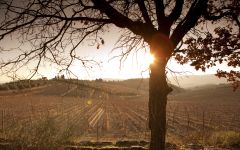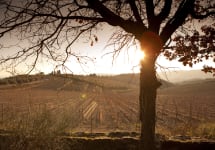Castello di Ama Haiku 2014
-
Wine
Spectator -
James
Suckling -
Robert
Parker



Product Details
Your Rating
Somm Note
Winemaker Notes
Blend: 50% Sangiovese, 25% Cabernet Franc, 25% Merlot
Professional Ratings
-
Wine Spectator
Gorgeous raspberry, black currant and violet notes grace this silky red, picking up tobacco, iron and wild herb details as this evolves through the long finish. Has serious grip, but all the components are there. Sangiovese, Merlot and Cabernet Franc. Best from 2020 through 2033.
-
James Suckling
This is so pretty on the nose with fresh blueberries, blackberry bush, mulberry tart, a selection of fresh herbs and vanilla and cigar box. Full body, dense yet polished tannins, a fine line of acidity and a chewy finish.
-
Robert Parker's Wine Advocate
This wine is intended as a sort of alter ego to the Chianti Classico Gran Selezione San Lorenzo. The 2014 Haiku is 50% Sangiovese blended with Cabernet Franc and Merlot. Despite the presence of the international varieties, this is a firmly territory-driven expression. This wine delivers medium texture and a silky finish. It never feels to heavy or dense. This vintage makes excellent use of its inner elegance and natural freshness. The winemaking team concentrated fruit as much as the cool 2014 growing season would permit. The focus here is strictly on finesse.
Other Vintages
2019- Vinous
-
Robert
Parker -
James
Suckling -
Wine
Spectator
-
Robert
Parker -
James
Suckling -
Wine
Spectator
-
Robert
Parker -
Wine
Spectator
-
Robert
Parker -
James
Suckling
-
Robert
Parker -
James
Suckling -
Wine
Spectator






With hundreds of red grape varieties to choose from, winemakers have the freedom to create a virtually endless assortment of blended red wines. In many European regions, strict laws are in place determining the set of varieties that may be used, but in the New World, experimentation is permitted and encouraged resulting in a wide variety of red wine styles. Blending can be utilized to enhance balance or create complexity, lending different layers of flavors and aromas. For example, a red wine blend variety that creates a fruity and full-bodied wine would do well combined with one that is naturally high in acidity and tannins. Sometimes small amounts of a particular variety are added to boost color or aromatics. Blending can take place before or after fermentation, with the latter, more popular option giving more control to the winemaker over the final qualities of the wine.
How to Serve Red Wine
A common piece of advice is to serve red wine at “room temperature,” but this suggestion is imprecise. After all, room temperature in January is likely to be quite different than in August, even considering the possible effect of central heating and air conditioning systems. The proper temperature to aim for is 55° F to 60° F for lighter-bodied reds and 60° F to 65° F for fuller-bodied wines.
How Long Does Red Wine Last?
Once opened and re-corked, a bottle stored in a cool, dark environment (like your fridge) will stay fresh and nicely drinkable for a day or two. There are products available that can extend that period by a couple of days. As for unopened bottles, optimal storage means keeping them on their sides in a moderately humid environment at about 57° F. Red wines stored in this manner will stay good – and possibly improve – for anywhere from one year to multiple decades. Assessing how long to hold on to a bottle is a complicated science. If you are planning long-term storage of your reds, seek the advice of a wine professional.

Famous for its food-friendly, approachable red wines and their storied history, Chianti is perhaps the best-known wine region of Italy. This appellation within Tuscany has it all: sweeping views of rolling hills, endless vineyards, the warm Mediterranean sun, hearty cuisine and a rich artistic heritage. Chianti includes seven subzones: Chianti Colli Fiorentini, Rufina, Montalbano, Colli Senesi, Colline Pisane, Colli Aretini and Montespertoli, with area beyond whose wines can be labeled simply as Chianti.
However the best quality comes from Chianti Classico, in the heart of the Chianti zone, which is no longer a subzone of the region at all but has been recognized on its own since 1996. The Classico region today is delimited by the confines of the original Chianti zone protected since the 1700s.
Chianti wines are made primarily of Sangiovese, with other varieties comprising up to 25-30% of the blend. Generally, local varieties are used, including Canaiolo, Colorino and Mammolo, but international varieties such as Cabernet Sauvignon, Merlot and Syrah are allowed as long as they are grown within the same zone.
Basic, value-driven Chianti wine is simple and fruit-forward and makes a great companion to any casual dinner. At its apex, Chianti is full bodied but with good acidity, firm tannins, and notes of tart red fruit, dried herbs, fennel, balsamic and tobacco. Chianti Riserva, typically the top bottling of a producer, can benefit handsomely from a decade or two of cellaring.
